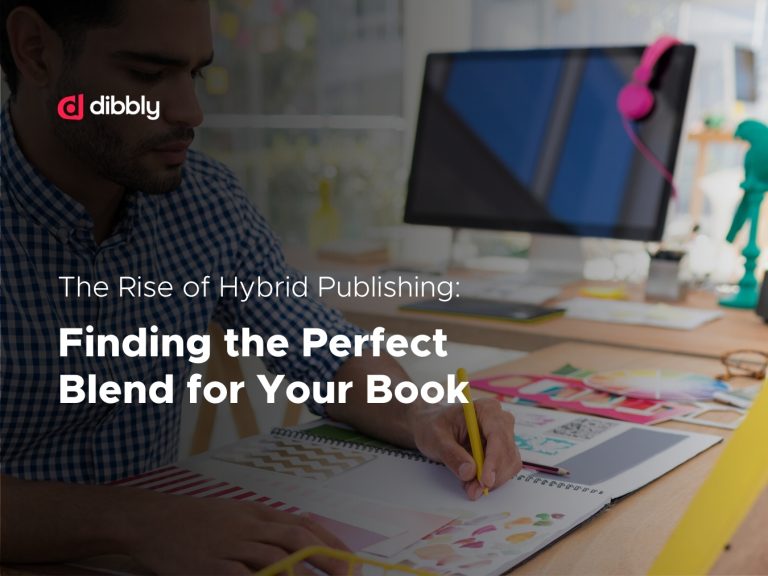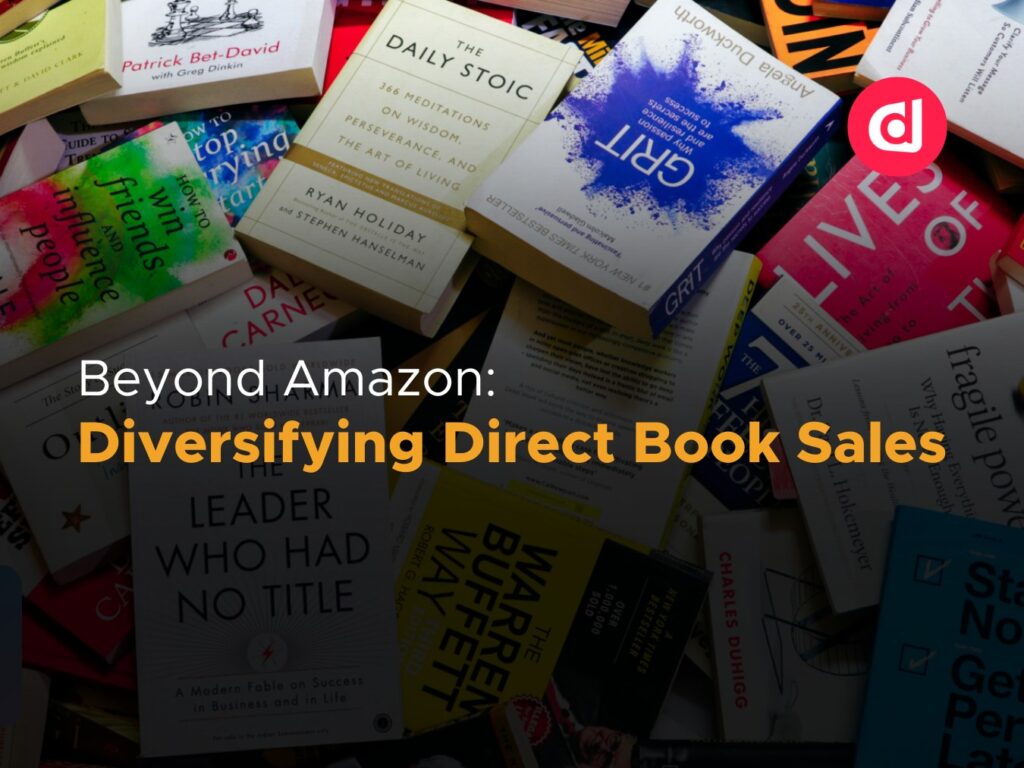Thriving industries are all likely to share the commonality of having enjoyed significant progress courtesy of technological advancements, particularly in the realm of digital media. The ever-evolving technological advances tend to bring significant benefits to even industries whose inception can be traced back to ancient times, yet they’ve been modernized seamlessly.
One such industry that has reaped the rewards of technology is book publishing and distribution. Even with the backing of an established publisher, getting shelf space is still a tumultuous task. This becomes even more daunting for self-published authors. The traditional brick-and-mortar establishments and the literal hoops publishers and authors have to go through to publish their work have essentially become obsolete as a result of Amazon Kindle Direct Publishing (KDP).
Despite the invaluable benefits that access to self-publishing through platforms such as Amazon KDP provides, some measures may not be clearly understood, therefore worrying novice users. When implemented, these features make a good service better by increasing the available options and streamlining its functionality. Having an understanding of even the unpleasant aspects of using this service can be deemed beneficial, if only as a means of alleviating worry and allowing you to proceed on your self-publishing journey with confidence.
In this article, we will emphasize the best way—as a self-published author—you can navigate the Amazon KDP policies on returns. Dealing with returns can get frustrating and may cast a dark shadow over your hope of success as an author. These setbacks should not dissuade you from pursuing your goals of being an acclaimed author, as there are means of alleviating the impact of returns that we will further explore in this article.
Amazon KDP Return Policies
Before we get into the Amazon KDP policies, we should establish what Amazon KDP is. Amazon is the world’s largest online retailer, specializing in e-commerce services. One such online-based service is their online book publishing platform, Kindle Direct Publishing (KDP). Through Amazon KDP, authors and publishers have access to distribution services that enable the self-publishing of their books.
What makes Amazon KDP so appealing is that it is readily available to authors, publishers, and consumers of literature globally. It provides a stable infrastructure that not only ensures reach through its distribution platform but also establishes a payment structure that protects all parties.
[video]
Payments and List Price
The payout an author receives for sales through Amazon KDP is known as royalties. The royalty is a percentage of the cost of the book after Amazon has deducted its fee for the use of its distribution platform. The percentage amount charged is primarily based on whether the format of the book sold is an ebook or paperback, with each format having variances that also affect the royalty amount being paid.
There are two tiers of fees within each format; for an ebook, authors will either be paid 35% or 70%, while paperbacks and hardcovers typically attract a 60% payout to authors but have the option of accessing an additional feature, which will result in a decrease to 40% royalty.
While the pertinent thing to do, which on the surface seems to be the more apparent choice, is opting to be paid a higher percentage amount, it isn’t as clear-cut as choosing that higher amount. Some requirements must be met to qualify for a greater percentage. In addition to meeting these requirements for additional features and benefits that will likely benefit the bigger picture, it also affects the percentage paid out to you, the publisher.
Ebooks
- Region: For a book to be eligible for 70% royalty, the customer purchasing the book must be located in an approved region listed by Amazon.
- Pricing: To qualify for 70% royalty, the book must be listed at between $2.99 to $9.99.
- Delivery surcharge: Given that an author meets the two prior requirements and requests a 70% royalty payout, they will be required to cover the download charges, which are based on the number of megabytes; each megabyte attracts a cost of 15 cents.
Hardcover and Paperback
- Printing cost: When a physical copy of a book is purchased, it gets printed based on that demand. The cost of printing is deducted from the 60% or 40% that the author receives as royalty; the actual cost is based on several factors unique to the copy being printed.
- Expanded distribution: This is an additional feature that publishers can opt-in for and will result in a deduction of royalty from 60% to 40%. This feature will promote and make your book accessible to distributors in libraries and bookstores, enabling them to order your book in bulk should they choose. This feature is currently only available for paperbacks and not hardcover copies.
The list price is, for the most part, at the discretion of the author or publisher that uploads the book, but there are a few guidelines provided when pricing a book that either must be adhered to or will allow access to better benefits once it meets the criteria.
The mandatory minimum list price pertains to hardcover and paperback books; Amazon KDP mandates that the book’s publication cost should cover a percentage of the printing cost. The printing cost is easily attainable through the Amazon KDP pricing and royalty calculator. The parameters that will be considered are book type, interior type, trim size, marketplace, and page count.
Handling Returns on Amazon KDP
A bit of a qualm that authors who publish through Amazon KDP have encountered is an issue with the return policy. What influences the skepticism of publishers regarding this policy is the fact that before the customer decides to purchase a book, they are provided with sufficient details on the book, including a description.
The propensity to return items purchased online is likely a result of consumers being unable to inspect the goods as they would with a walk-in store, so they rely on product descriptions provided by sellers instead of their assessments. This increases the likelihood of erroneous purchases that would validate the need to have a book returned.
Ebooks that are accidentally purchased either through an unintended click or being mistaken for a book with a similar title may be returned within seven days of purchase, given that no more than ten percent have been read. There is a longer period for physical copies, likely a result of having to take into account the time it takes to ship to customers. The majority of returns for physical copies are due to defects discovered after delivery, including printing mistakes.
Amazon KDP Refund Process
When a consumer requests a return or refund for an ebook, given that all criteria are met, such as being within the approved time, 10% or less being read, and having an account in good standing, they would then be revoked access to that book and receive a refund to the payment method used for the initial purchase. For ebooks received as gifts, the refund is issued via an Amazon gift card.
The publisher would then see a reduction in their royalty statement, reflecting the amount that had been reimbursed.
Paperback and hardcover books that are returned do not result in a deduction in the author’s royalties; instead, the physical copy is kept in a warehouse and used to fill future orders. When a returned book is used to fill a new order, it does not reflect as a new purchase on the royalty report for the author, as a payment had already been received from the initial purchase.
Should the stockpile of returned books reach an amount that prompts Amazon KDP to implement measures to clear up the excess stock of returns, the measure that will likely be utilized is placing a discount on the book until the returned stock is cleared, then the price is reverted to its original amount.
Accepted Reasons for Returns
The ease with which consumers can return a book through Amazon KDP is, with good reason, a concern to authors and publishers. It only takes a few clicks for someone with an account in good standing to go through the process of getting a refund. Measures are in place to strike a balance between reducing the hassle of getting a refund and protecting publishers.
To prevent abuse of the return policies of Amazon KDP, accounts are monitored, and should they exceed returns of six within a month, the option to process a return is suspended, and a request would need to be made via customer support to have a book returned, which will be assessed on a case-by-case basis. Additionally, when a consumer returns a book, that title is no longer available to them for purchase.
Influences on Return Culture
American consumers are accustomed to the convenience of being able to return a product they have purchased for a myriad of reasons. We are constantly seeking the best, and any minute displeasure will likely prompt us to ask for something we believe is a better fit for us or our money back. This isn’t always daunting for the seller, as the security that being able to return an item offers encourages consumer participation in commerce.
There appears to be no decline in the trend of American consumers taking advantage of the return culture, as the figures keep rising year over year. As more consumers veer towards the ease of e-commerce, that has not in any way deterred the tradition of returns.
Rather, it has resulted in an actual increase in returns, which is likely attributed to the nature of shopping online, which offers instant access to any product imaginable, with marketing strategies such as pop-up advertisements influencing purchases that would not have dawned on us to make if we had gone to a physical store, as it simply would not have been in our purview.
The only difference that exists between returns for an online and physical bookstore is the time that has to be allotted for shipping, but thanks to a reliable mailing system that provides several cost-effective courier services capable of delivering any size parcel within an expedited delivery time, the difference is hardly a deterrent.
In Summary
The benefits offered by Amazon KDP far outweigh the downsides caused by returns, which are admittedly a common part of conducting business, whatever the sector or product offered. The minimal losses incurred as a result of returns would ideally be kept as low as possible, and the policies implemented by Amazon KDP are done with that aim.
Thankfully, Amazon KDP has taken these concerns into account and made paramount the protection of publishers, ensuring that the work and dedication you have put into creating your book and making it available to consumers who will appreciate your efforts does not go in vain or is taken advantage of.
Frequently Asked Questions
Question: How frequently can returns be utilized before raising a red flag?
Answer: A maximum of six returns are allowed on an account within a month before it raises a red flag.
Question: Will there be a deduction in my royalty payment for returned ebooks?
Answer: Yes, returned books do attract a reduction in the royalty for the percentage amount they qualified for.
Question: Will my royalty payment be affected by a returned paperback or hardcover book?
Answer: No, it won’t; instead, these returned books are kept in storage and used to fulfill future orders.
Question: Will the deduction in my royalties be for the total cost of the book or the percentage after Amazon KDP deducts their percentage amount?
Answer: The deduction to royalties for returns will only be for the amount that was initially paid out.















